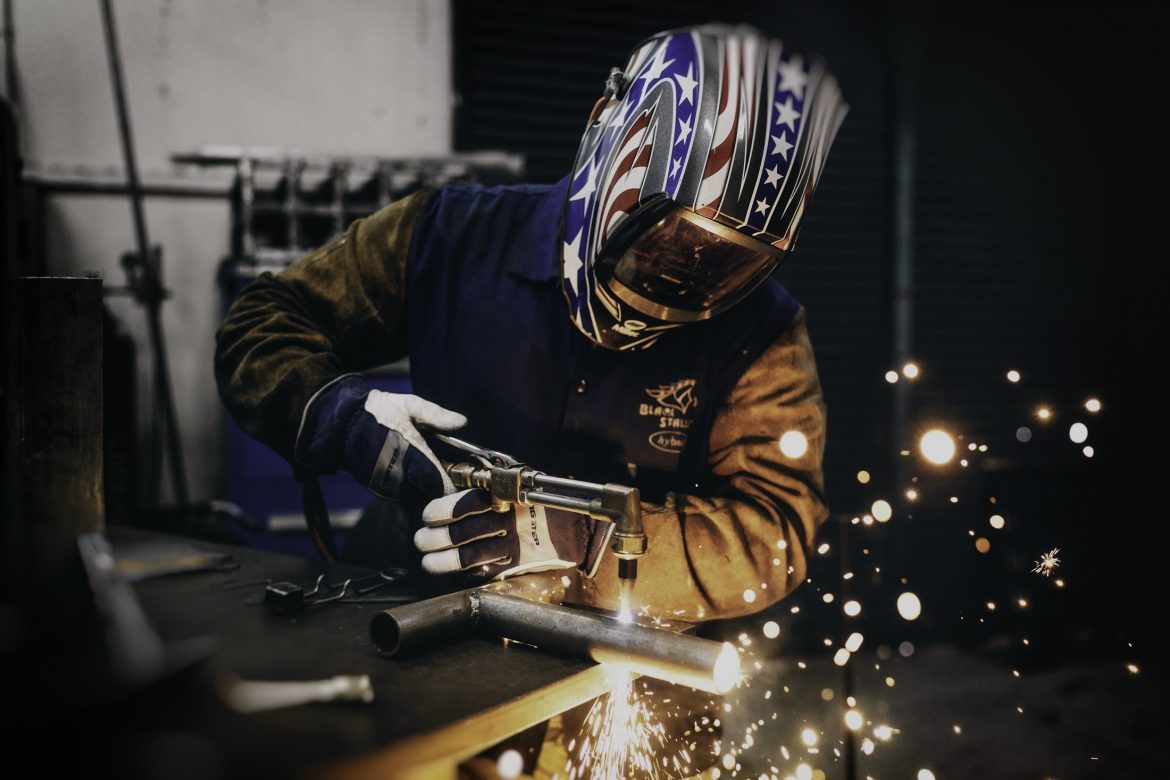The demand for metal cutting equipment and associated services will continue to grow .
Stable economic growth across the globe resulted in rising outputs and profits for steel in 2017, as well as for aluminum during the same period.
From cars to construction, metal is everywhere. In turn, builders and manufacturers need the right equipment and machine tools to work with basic stock like steel, aluminum and titanium.
In the coming decades, the demand for metal cutting equipment and associated services will continue to grow. Developing markets and fast-growing industries paint a hopeful and profitable picture of the coming decade.
How Fast Will Metal Fabrication Grow in the Coming Years?
Abundant reports point to significant growth throughout the coming years.
The first, from Market Insights Reports, took place in Spring 2020 and factored in a brief rebound period from the coronavirus pandemic. The report included all industries associated with metal manufacturing. Market Insights Reports calls for “historic growth” for metal manufacturing post-COVID-19 and a compound annual growth rate (CAGR) of 9% between 2021-2023, with a new global market value of $3915.3 billion.
Fortune Business Insights singled out machine tools specifically. In their “Metal Cutting Machine Tools Market” report, the research group showed a 4.8% CAGR for metalworking tools between 2019 and 2026, with the market’s valuation rising from $74.31 billion in 2018 to $109.39 in 2026.
Looking at a combination of services and industries under the “metal fabrication” umbrella, Transparency Market Research predicts a CAGR of 3.5% between 2019 and 2027, with a new global market value of $23.05 billion by the end of 2027.
Inclusions may vary depending on one’s definitions of “metal manufacturing” and “metal fabrication” and whether one combines different verticals like prefabricated metal and metalworking tools. No matter how it’s measured, however, the next several years should prove fruitful for these closely related industries.
Major Industries Contributing to Metal Cutting Growth
The rising demand isn’t just for metal cutting services but also for boring, grinding, milling, drilling and other shaping tasks that prepare metal for various applications. Companies need ready access to CNC machines, 3D printers and other “forming technologies.”
These are some of the fastest-growing or steadiest industries contributing to the rising demand for metal cutting services across the world:
- Automotive — cars and trucks.
- Other transportation — freight trucking, rail, shipbuilding.
- Machinery, tool and equipment manufacturing.
Other Factors Contributing to Metal Cutting Industry Growth
The rising popularity of high-speed steel (HSS) machine tools in recent years is another contributing factor to the growth of metal cutting services. Manufacturers frequently choose tools made from high-speed steel because they are harder, longer-lasting and more durable than carbon steel machine tools.
However, according to a report from Mordor Intelligence, HSS requires as much as four times the cutting time as carbon steel to finish a workpiece. This factor causes two effects.
First, it raises the bar for the speed and efficiency of modern metal cutting machines and increases competitive intensity within the market. Companies must work harder to design machinery that fulfills client design, material choice and deadline requirements.
Second, it may cause manufacturers to invest in several machines at once to multiply their manufacturing capacity, further amplifying demand for metal cutting products.
According to the Mordor report, additional factors contributing to the huge growth of the metal cutting industries include:
- Assortments of new metal coating and protective technologies. Each breakthrough in areas like wear- and chemical-resistant coatings create a need for a new type of material specialist or a new class of treatment, handling or fabrication techniques.
- Automobile demand. Extremely steady — described in the report as “remarkable” — growth in consumer-level light automobiles throughout the world since at least 2011 ties the demand for metal to the rise in the global population.
- Global economies. Of the economies studied in the report, the Asia-Pacific (APAC) region carries the largest market share for metal cutting tools. Tool consumption in China alone rose from 321.5 billion ¥ ($46.3 billion) in 2016 to 388 ¥ ($55.9 billion) in 2017.
The push for sustainable manufacturing cannot be overlooked either. As companies become better equipped to reclaim and repurpose industrial scrap, new revenue streams and opportunities for further competitive advantages reveal themselves.
Metal fabrication clients concerned with eco-friendly building or manufacturing contribute to the development and permeation of greener techniques and cleaner technologies. This phenomenon spurs additional growth and the addition of yet another family of professional skills for job seekers to develop.
What About Manufacturing-as-a-Service?
Machine tools can be an important asset. Owning the means of production allows closer tolerances, better quality control and a more finely tuned supply chain.
Even so, manufacturing-as-a-service (MaaS) is now at the forefront of the metal cutting industry. MaaS involves outsourcing cutting, tooling, fabricating or shaping tasks, or the entire manufacturing workflow, to an outside party instead of buying the required equipment.
Outsourcing is nothing new, but according to a report from Deloitte, several exponential technologies converge to make MaaS affordable and attractive for companies in need of metal cutting and fabrication services.
These technologies include end-to-end data-gathering for tighter tolerances. Companies can now pay for an entire modern and connected manufacturing “experience” rather than investing in their own “smart” infrastructure.
Whether buying machine tools outright or retaining MaaS services, each of these factors ultimately means a bright future for metal cutting. Even with present geopolitical and public health difficulties factored in, the industry is ready for huge growth.
Bio:

Emily covers topics in manufacturing and environmental technology. You can follow her blog, Conservation Folks, or her Twitter to get the latest updates.


